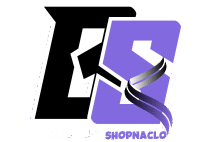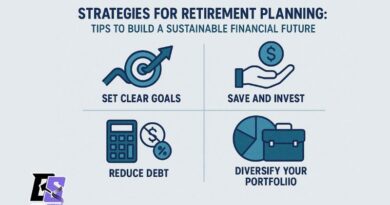How Applicant Tracking Improves Hiring Efficiency in Modern Workplaces
What Is Applicant Tracking, and Why Does It Matter?
Today’s recruitment landscape makes finding and hiring top talent a complex process. Companies face larger applicant pools, increased competition, and evolving expectations. Traditional methods (such as spreadsheets, manual emails, and paper resumes) invite inefficiency and risk losing qualified candidates, as resumes can get misplaced or slow processes deter applicants. Digital applicant tracking systems revolutionize the management of the hiring process for organizations.
With the increasing need to quickly assess and engage candidates, applicant tracking systems (ATS) have emerged as vital tools in HR departments across all industries. For those wondering what does ATS means during recruiting, an ATS is a platform that organizes, filters, and leverages candidate data to enable more efficient and reliable hiring decisions. These systems centralize applicants’ histories, letting recruiters focus more on relationships with top prospects. SHRM reports that these platforms enable employers to widen their reach and fairly assess candidates, improving outcomes for both employers and job seekers.
Core Features of Modern Applicant Tracking Tools
Modern ATS platforms have advanced beyond basic resume depositories, offering automated resume parsing and organization of candidate information. This allows recruiters to focus on engaging with talent rather than spending time on data entry. Organizations can classify candidates into targeted segments, accelerating the search for specific roles. Features like seamless job posting integration ensure vacancies are distributed to multiple boards and networks simultaneously, attracting a wider candidate pool. Intelligent algorithms scan resumes, populate candidate profiles, and flag relevant experience, reducing repetitive work. Job posting distribution integrates with external job sites and social networks, enabling recruiters to reach a larger talent pool quickly. Hiring teams can rate applicants, share comments, and manage feedback, creating transparency throughout the decision-making process. Access to robust analytics provides visibility into recruitment processes. Modern ATS platforms also integrate with onboarding tools, background check services, and payroll systems, enabling HR professionals to manage candidates’ journeys seamlessly.
Key Benefits for Employers and Hiring Managers
An ATS (Autonomous Talent System) is a valuable tool for employers and hiring teams, as it centralizes all candidate interactions, eliminates repetitive tasks, and can fill roles up to 20% faster than manual processes. It ensures consistency in candidate evaluation, mitigates bias, and facilitates data transparency to inform strategic adjustments. It also supports faster, informed decision-making, minimizing costly vacancies and promoting a proactive talent pipeline. Additionally, ATS solutions often include auditing capabilities and pre-built reporting for required documentation. A well-chosen ATS leads to better retention rates and higher-quality new hires, providing a competitive edge in crowded industries.
Impact on the Candidate Experience
An ATS simplifies the application process for job seekers, keeping them informed and empowered. Online portals allow candidates to upload resumes, update profiles, and check application statuses. Automated emails acknowledge submissions, set expectations, and share interview logistics. Self-service candidate dashboards offer real-time updates, while automated scheduling tools minimize gaps and enhance candidate satisfaction. Feedback mechanisms ensure that applicants feel valued, even if they are not selected for the position. Modern ATS technology enables timely communication and clear next steps, making a candidate’s application experience a key factor in the competitive talent market.
Common Challenges and How Companies Overcome Them
Technology can be a valuable tool in recruitment, but it can also have its drawbacks. Some systems may weed out great talent due to rigid keyword algorithms or complex workflows, while others may dilute the personal nature of the recruiting process. To ensure the optimal use of technology, organizations should regularly review and update search criteria, provide ATS training to all relevant personnel, and combine data insights with recruiter expertise to make informed, balanced decisions. Continuous feedback from hiring managers and candidates can refine processes and ensure technology remains a helpful asset rather than an obstacle.
Data Security, Privacy, and Legal Considerations
ATS platforms are crucial for managing sensitive information, requiring robust security and privacy safeguards. Organizations must adhere to laws such as GDPR and EEOC guidelines, which require features like encrypted data transfers, secure user authentication, easy opt-out functionality, and thorough audit trails. Transparent privacy policies, applicant consent forms, and regular security audits minimize risks to sensitive data. Configurable access permissions ensure that only authorized personnel can view or modify candidate data. Selecting an ATS with built-in compliance features helps organizations stay ahead of regulations and mitigate legal risks.
The Future of Applicant Tracking Technology
Artificial intelligence, analytics, and chatbots are revolutionizing applicant tracking systems (ATS). These technologies can screen resumes, predict hiring trends, recommend matches, and answer questions 24/7. They also contribute to diversity, equity, and inclusion, enhancing fairness throughout the hiring process. However, companies must strike a balance between automation and empathy, maintaining human touchpoints to ensure a balanced approach.
Getting Started with Applicant Tracking Solutions
Adopting an ATS is simple if you have clear goals and requirements. Evaluate your existing recruitment process, identify areas of friction, and create a checklist of essential features. Assess integration with HR, payroll, and onboarding platforms, and evaluate reporting capabilities by testing usability and candidate-facing features to ensure a smooth experience. Engage stakeholders in selecting and piloting new platforms. As your organization grows, regularly solicit feedback, monitor performance metrics, and use your ATS as a dynamic business asset to meet modern workforce demands.
read also: cyclemoneyco



